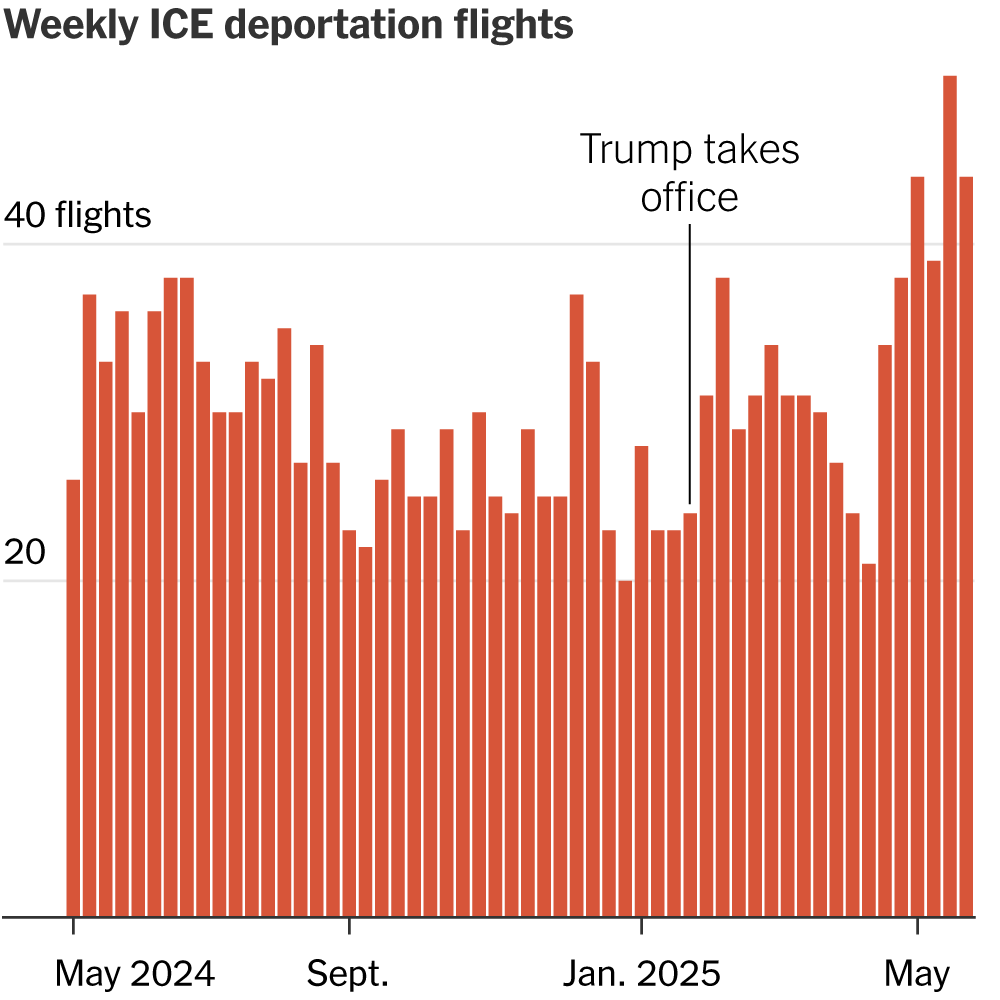In the wake of former President Donald Trump’s new ICE deportation order, many immigrants, communities, and policymakers are left grappling with what this means for the future of immigration enforcement in the U.S. As ICE gears up to enforce stricter measures, understanding the full impact of this directive is essential. Whether you’re an immigrant, a community leader, or just an American concerned with the effects on your neighborhood, there are crucial elements to consider about this policy shift and how it will affect millions of lives.

Trump’s New ICE Deportation Order
| Insight | Stat/Fact |
|---|---|
| The ICE directive targets undocumented immigrants with certain criminal histories. | Around 11 million undocumented immigrants currently live in the U.S. |
| Trump’s policy enforces stricter deportation processes, increasing ICE raids. | Deportations have surged by nearly 30% under Trump’s prior administration. |
| Deportations could put community policing at risk, as immigrants may fear cooperating. | 44% of undocumented immigrants fear interaction with local authorities. |
Trump’s new ICE deportation order is a bold attempt to change the landscape of U.S. immigration policy. The consequences, however, are complex. Immigrant families, local law enforcement, and the broader communities will feel the effects in both tangible and intangible ways. As we move forward, the real impact will depend on how legal challenges, public opinion, and local policies play out. For many immigrants, it’s a waiting game full of uncertainty, while for others, it could be the beginning of a more restrictive era for immigration in America.
A New Era for ICE Enforcement: What’s Changing?
The latest ICE directive from Donald Trump is a continuation of his “zero-tolerance” approach to illegal immigration. Under this new order, Immigration and Customs Enforcement (ICE) will focus on deporting individuals who are in the U.S. without legal authorization and have been convicted of serious crimes, including felonies like drug trafficking, human smuggling, or violent crimes. This is a shift from the Obama-era approach, which placed more emphasis on deporting only those who posed a threat to national security or public safety.
However, the difference this time around is the increased focus on a broad range of individuals, including those who have committed lesser offenses. Experts warn that this shift may result in the deportation of thousands of people who have spent much of their lives in the U.S. and whose criminal histories might not reflect violent crimes. This could create a climate of fear and uncertainty, particularly in immigrant communities where many individuals may have been law-abiding citizens for years.
The Impact on Immigrants
For immigrants, this new ICE deportation order could significantly alter their lives. While those with criminal backgrounds may understandably be a focus of the directive, the broad scope means that even those with minor offenses or who have been living in the U.S. for decades might be at risk. Families could be torn apart, and individuals who have no legal status could be deported, often to countries they barely know.
One major concern from advocacy groups like the ACLU is that the order could lead to the separation of families, many of whom have lived in the U.S. for years. Those in mixed-status families—where some members are legal residents, while others are undocumented—may be subject to increased scrutiny, leading to fears of loved ones being detained and deported.
In fact, an estimated 11 million undocumented immigrants live in the U.S. today, with many of them working essential jobs in healthcare, agriculture, and construction. For these workers, the deportation threat could create both financial and emotional distress, especially when considering the increased risk of family separation.
Communities and Local Law Enforcement
The effects of Trump’s new ICE deportation policy won’t just be felt by the immigrants directly targeted. The broader communities where these individuals live will likely see shifts in how they operate. One notable consequence is the potential erosion of trust between immigrant communities and local law enforcement. Immigrants, fearing ICE raids, may be hesitant to report crimes, cooperate with police, or seek help when they need it most.

For example, in cities like Los Angeles and Chicago, which have long had policies that limit local police cooperation with federal immigration authorities, this new order could result in heightened tensions. Community members who previously felt safe in their neighborhoods may now be reluctant to engage with local authorities. A 2017 report from the American Progress noted that 44% of undocumented immigrants feared contact with law enforcement, citing deportation risks as a key reason for this fear.
Moreover, local law enforcement officers, who often work with ICE in federal investigations, could find themselves caught in the middle of this tension, balancing their duties to uphold the law with the necessity of maintaining community relationships.
Legal Challenges and the Road Ahead
While Trump’s ICE deportation order is a significant step in his tough immigration policy, it’s far from a done deal. Legal challenges are expected to flood the courts, with many immigration advocates arguing that the policy violates the rights of immigrants, especially those with longstanding ties to the U.S.
For instance, organizations like Human Rights Watch argue that deporting individuals who have been in the U.S. for decades, with families, jobs, and homes, undermines the country’s humanitarian values. They contend that such measures may be in violation of international laws protecting the rights of refugees and migrants.
Moreover, state and local governments could seek to resist the enforcement of the new directive. Cities like San Francisco and New York, known for their sanctuary city policies, may refuse to cooperate with ICE, leading to a complex legal showdown between federal and local authorities.
What This Means for the Future
With Trump’s return to office (if that happens), or even as he remains a key political figure, the U.S. may continue to see a hardline stance on immigration enforcement. If this policy stands, millions of undocumented immigrants could face higher deportation risks, causing shifts in community dynamics, legal battles, and public opinion.
In the short term, immigrant communities will need to prepare for possible ICE raids, while activists, policymakers, and legal professionals will work to navigate the complexities of the new directive. Over time, this could also spur legislative action at the state and federal levels aimed at either curbing or expanding immigration enforcement.
FAQs
What is the main focus of Trump’s new ICE deportation order?
The new order focuses on deporting undocumented immigrants with criminal backgrounds, but its scope has expanded to include those with minor offenses or long-standing ties to the U.S.
How does this affect immigrant communities?
Immigrant communities may experience heightened fear and uncertainty, with families facing the threat of separation and potential deportation. Local cooperation with law enforcement could also decrease.
Can this new order be challenged in court?
Yes, there will likely be legal challenges from advocacy groups and state governments that argue the policy infringes on the rights of immigrants.
Is there a risk of increased tension between communities and law enforcement?
Yes, many immigrant communities fear ICE raids and may avoid contacting local authorities, which can undermine public safety and cooperation.
What is the broader impact on U.S. society?
This policy could reshape immigration practices in the U.S., influencing legal, social, and political dynamics as communities adapt to these new enforcement measures.






